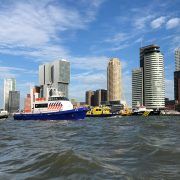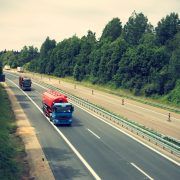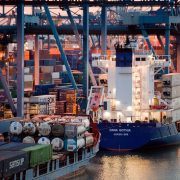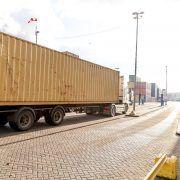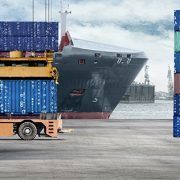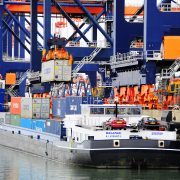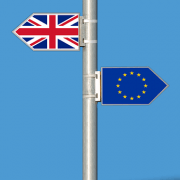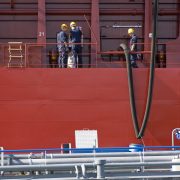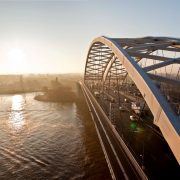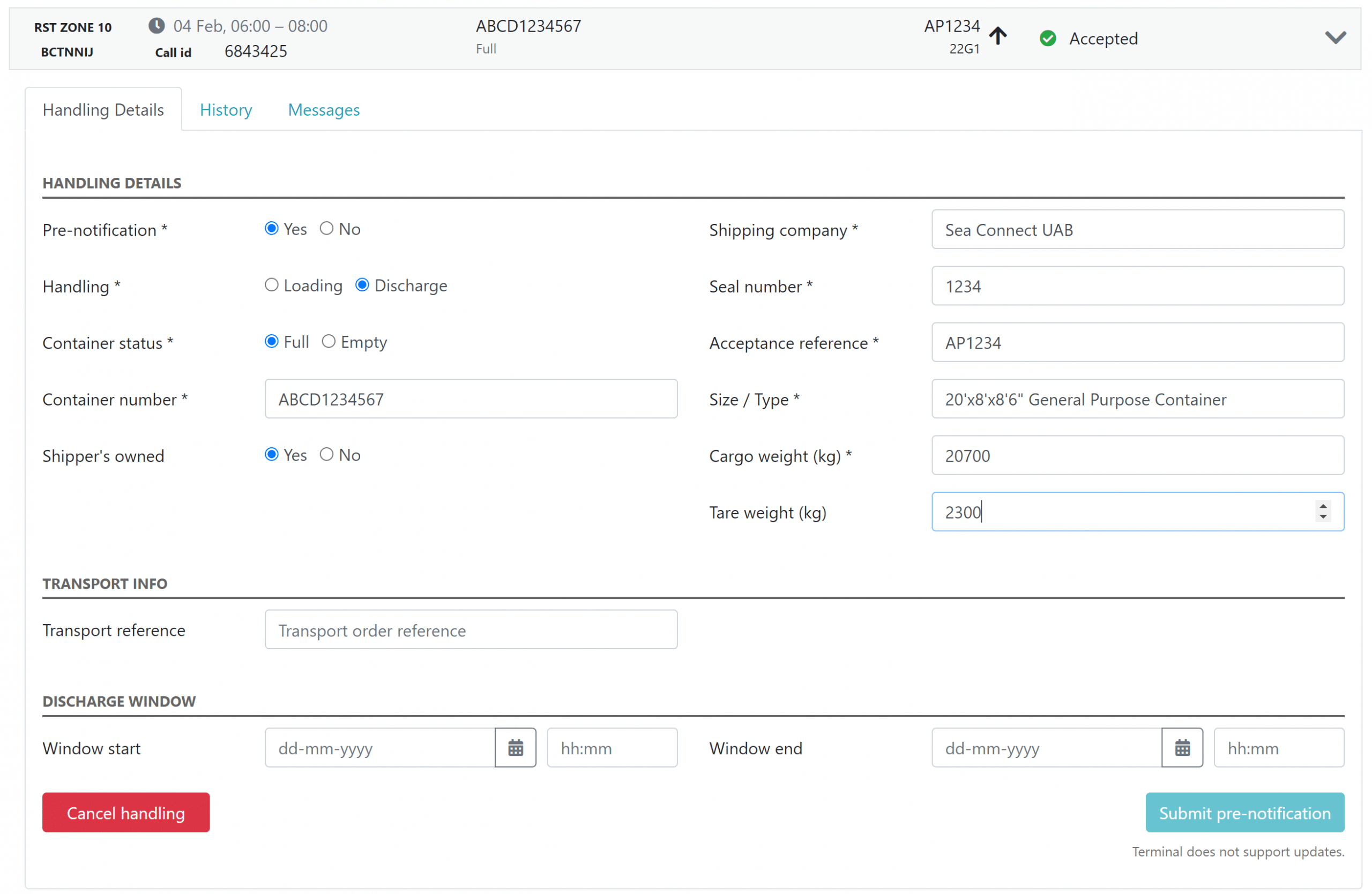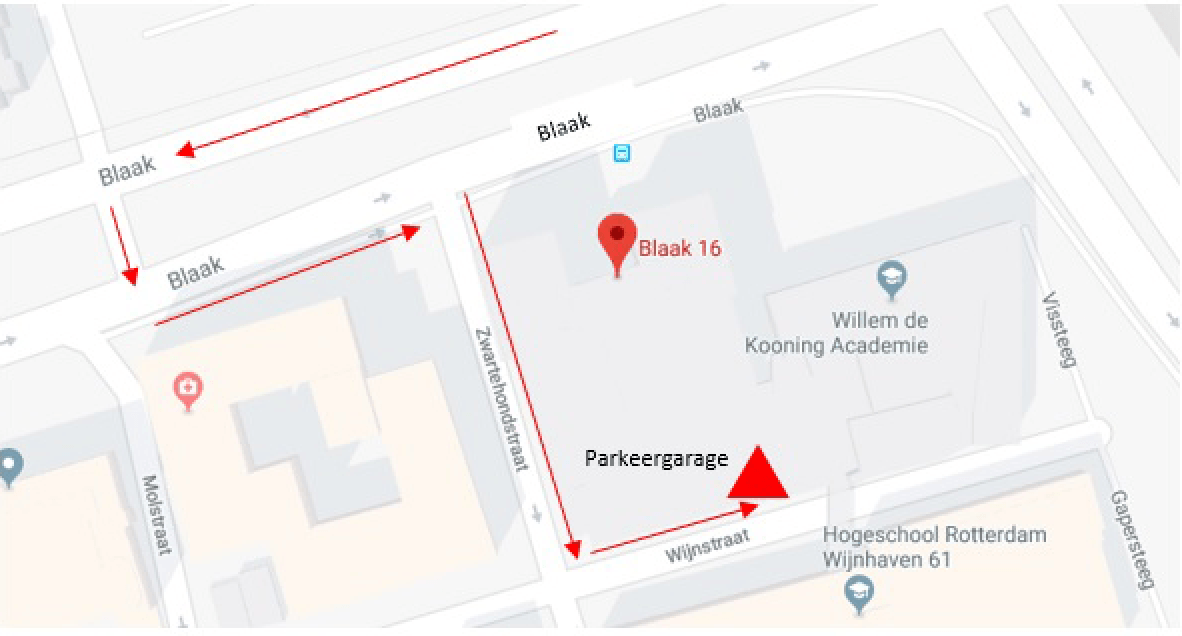HTS Intermodaal and neska Container Line are the first barge operators to be connected via APIs to the Portbase service Hinterland Container Notification (HCN) Barge by their software suppliers Modality and Yellowstar. Both barge operators now automatically and quickly submit their pre-notifications from their own systems. Modality / HTS Intermodaal and Yellowstar / neska Container Line share their experiences.
Modality and HTS Intermodaal
‘The main advantage of the API technology is speed’
“Generally speaking, we are highly satisfied with the use of APIs,” says Evert van Hoven, Managing Director of Modality. “We have already been applying them in the interfaces between different customers for years. The main advantage of the API technology is speed. One click of the mouse and the information is immediately available in the system on the other side. With EDI, there is quite a time lag.”
Intensive cooperation
Barge operator HTS is one of Modality’s customers that has already been working with APIs for a longer period of time. Their registration as a pilot customer for HCN Barge API was very welcome. “HTS Intermodaal was keen to cooperate,” says Van Hoven. “They are investing a lot of time, experience and energy into helping us and Portbase from their daily practice.” Within a few months, a stable HCN Barge API was thus realised for HTS Intermodaal. “When determining the API specifications, Portbase also requested input from us and from HTS Intermodaal. We went back and forth. In this way, the final API specifications were established.”
All advance information directly from the own system
As a first step, HTS Intermodaal is now fully submitting the pre-notifications for the large deepsea terminals in the port of Rotterdam via HCN Barge API. All information about ship and cargo is directly communicated from HTS Intermodaal’s own system to Portbase via APIs. It is no longer necessary to use the web screens of HCN Barge to report ship rotations and to pre-notify ship visits. Van Hoven: “In the meantime, we have started initiating phase 2 for HTS Intermodaal, in which we are building additional fields so that the required information from HCN Barge API is automatically sent to Nextlogic for their integrated planning of all container barge visits to the port of Rotterdam. Step by step, we are working towards the end result.”
Connecting other barge operators next
“The cooperation between Portbase and us is good,” concludes Van Hoven. “There is daily contact and each week we have a progress meeting. As soon as phase 2 works flawlessly, we are planning to also offer the other barge operators who are our customers the option to switch to HCN Barge API.”
“The main advantage of the API technology is speed. One click of the mouse and the information is immediately available in the system on the other side. With EDI, there is quite a time lag.”
Evert van Hoven, Managing Director of Modality
Yellowstar and neska Container Line
‘We now receive much better information at much faster speeds’
“Recently, our IT systems were made suitable for the automatic processing of all the data that we receive from others and send out ourselves,” says Hans Buytendijk, Managing Director of neska Container Line. “HCN Barge API plays an important role in this. Therefore, it is imperative to make sure to be properly connected to this.”
Together with software supplier Yellowstar, the company has been a frontrunner in the realisation of a fully-fledged API connection. Buytendijk: “As a frontrunner, you are directly involved in the processes that are to be developed. After all, there is often a discrepancy between daily practice and the plans that are devised at the drawing board. In dialogue with all the parties involved, you are able to actually participate and thus achieve the correct implementation.”
Pre-notification without manual actions
neska Container Line now uses HCN Barge API to pre-notify at all the major deepsea terminals at the Maasvlakte. Yellowstar’s Chief Commercial Officer, Rianne Groffen: “neska Container Line no longer needs to perform any manual actions for pre-notification. This saves time and prevents errors. All necessary data about travel, visits and containers is sent to the terminals via HCN Barge API and is also sent back to neska Container Line in the same manner.”
Time for the customer
“In concrete terms, this means we receive much better information at much faster speeds; next, we can automatically process this,” explains Buytendijk the advantages. “Ultimately, this takes us to a higher level as a company. Our staff no longer need to spend their time on repetitive manual activities. Instead, they can focus on the customer and on coming up with creative solutions to relevant transport questions.”
Ready for Nextlogic
As soon as they receive the go-ahead, Yellowstar will also connect neska Container Line to Nextlogic via HCN Barge API. Groffen: “We are happy with the Portbase – Nextlogic collaboration and the choice of the latest API technology. Now, all we need to do for the upcoming integrated planning of all container barge calls to the port of Rotterdam is link neska Container Line with Portbase. That provides clarity and makes things easier for all parties involved.”
“HCN Barge API ensures that we receive much better information at much faster speeds; next, we can automatically process this. Ultimately, this takes us to a higher level as a company. Our staff no longer need to spend their time on repetitive manual activities. Instead, they can focus on the customer and on coming up with creative solutions to relevant transport questions.”
Hans Buytendijk, Managing Director of neska Container Line

